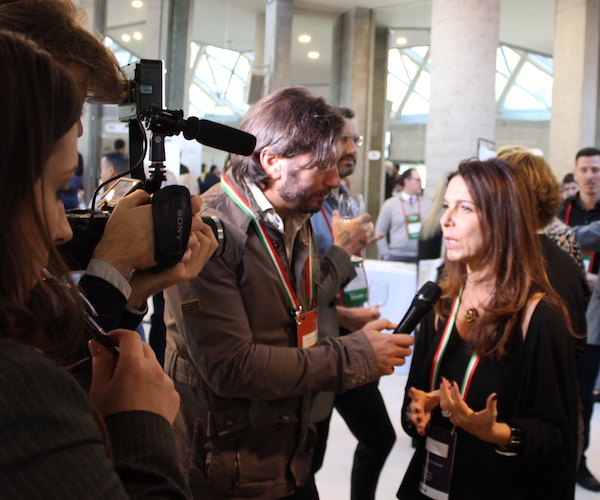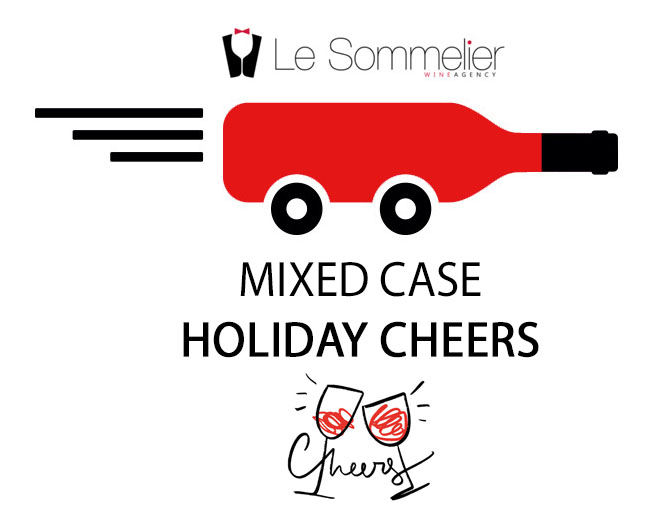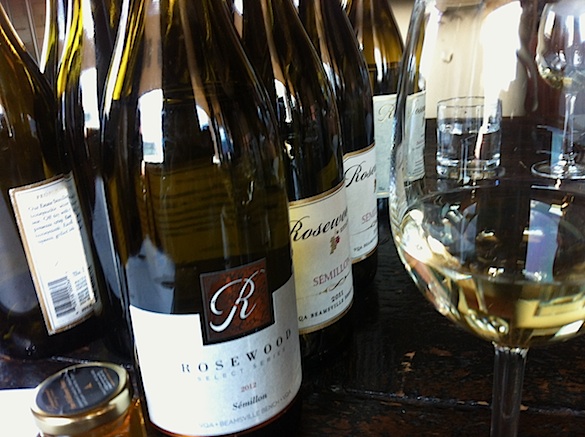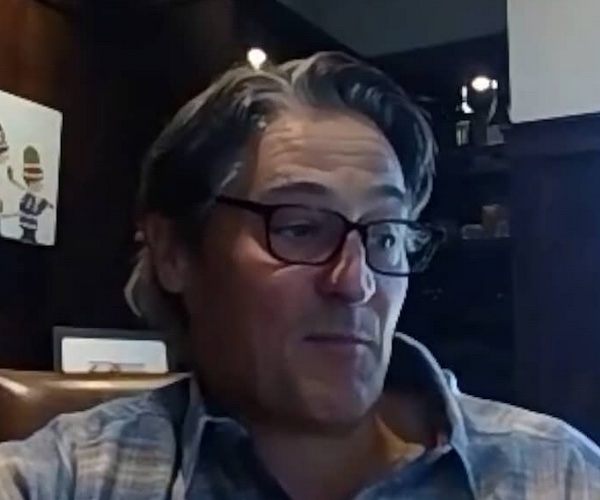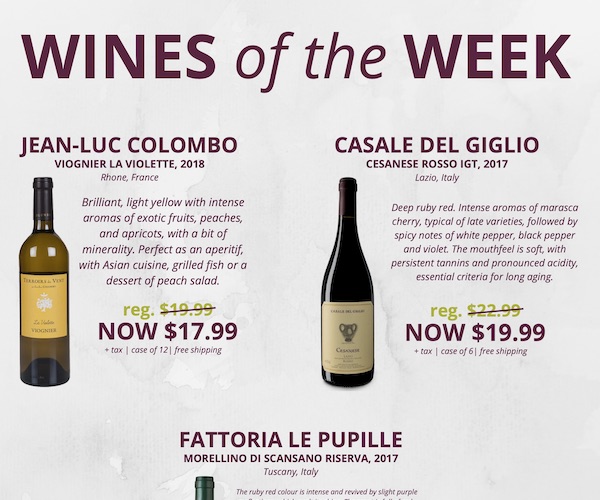Malcolm Jolley reports from the Italian Trade Commission Trade Tasting…
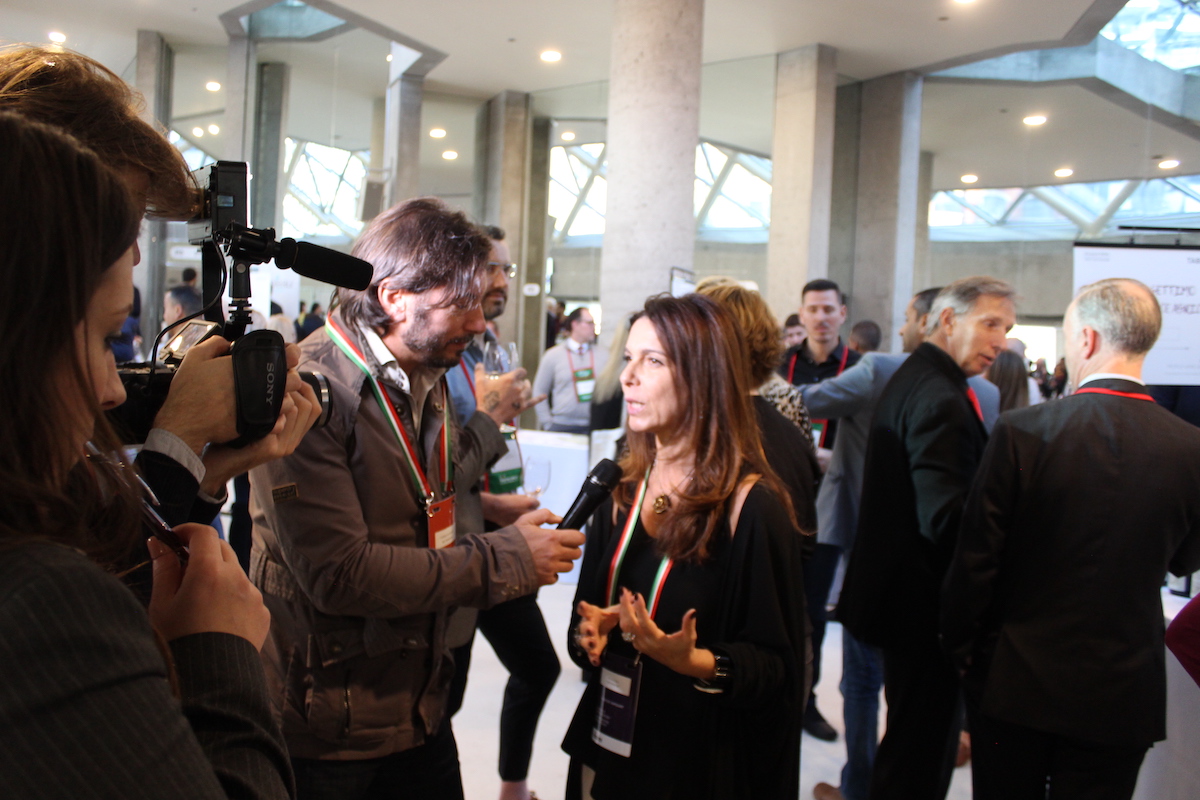
Dr. Lilly Fazio talks to the press at the Italian Trade Commission tasting, October 28.
The annual trade tasting hosted by The Italian Trade Commission in Toronto is one of the city’s biggest: there’s more wine, more visiting producers and more professional tasters in the room than just about any similar event. It can be daunting, even for a veteran attendee like me, so every year I try and lay out a strategy for the couple of hours I’ll spend circling the outer lobby of Roy Thomson Hall tasting Italian wine, meeting Italian producers and/or their Ontario agents. I suppose the first tip is just that: give yourself enough time. Unless you are some sort of wine tasting robot, even two hours of table hopping, which would be more than enough time at most tastings to cover all the wine, will likely only give you a small taste (sorry) of the show. This is because as important as tasting the wine is, communication and the exchange of information about whatever your tasting is just as important, whether you are in the trade or covering it as a journalist. And, of course, it’s also a social event and a chance to catch-up personally with colleagues and the visiting winemakers, owners, export managers and what have you.
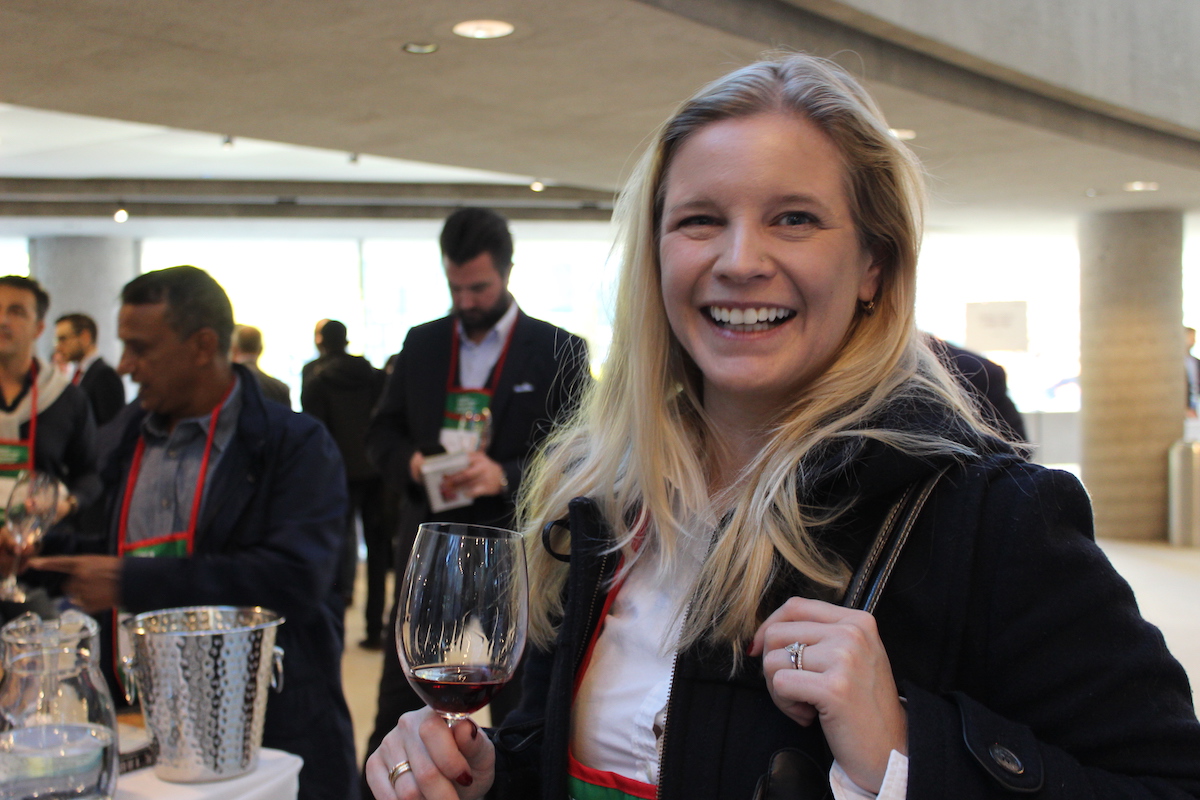
Sommelier and wine writer Lindsay Groves hard at work at the 2019 ITA trade tasting.
On effective strategy to manage however much time you have at the Italian Trade Tasting would be to pick-up booklet guide and find a quiet place to study it in order to map out a tasting route or order for the show. However there were two problems with this approach this year: 1) the booklet for ‘A Tasting of Wines from Italy’ was nearly 250 pages; and 2) time spent reading the booklet is time not spent tasting and learning. So, I opted for a strategy of diving in there, but with some general rules of engagement. I’ve outlined them below in my report on the show. I hope there’s some value to methods being my madness.
1) Find a familiar face, and something you know you love…
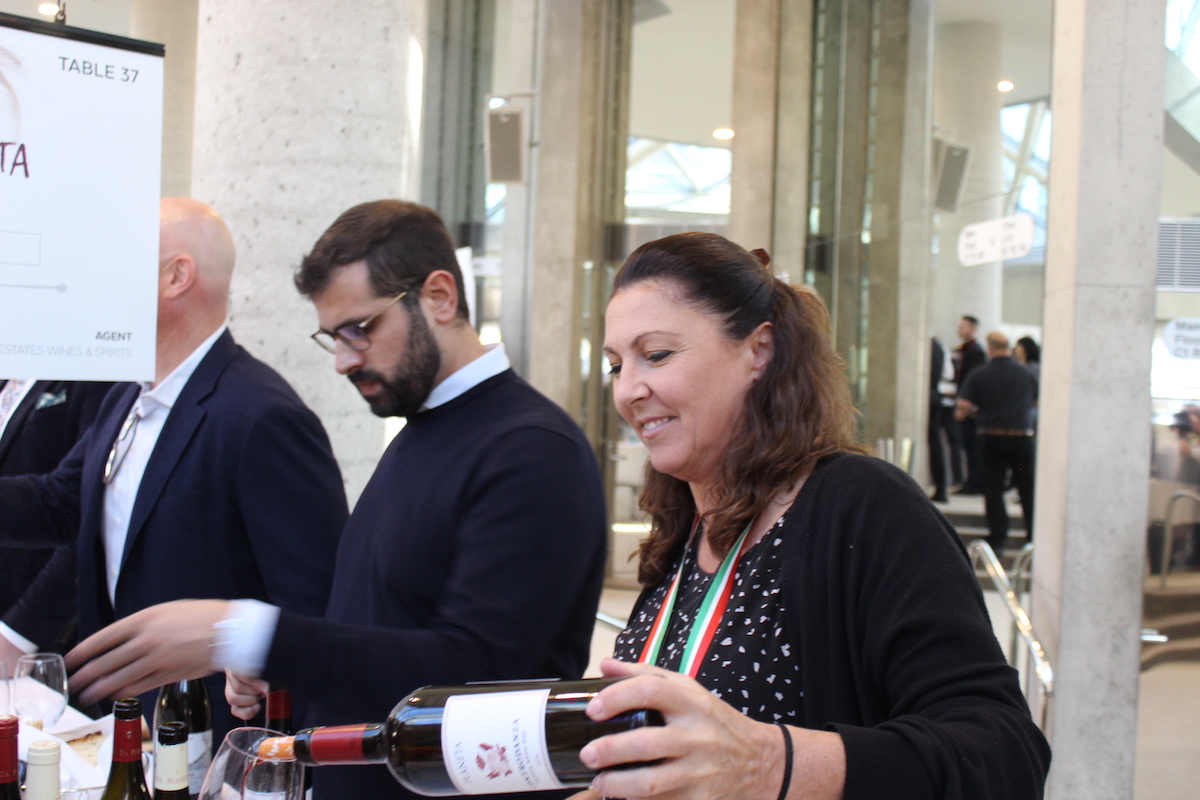
Penny Murray pours Planeta.
I met Penny Murray, from Sicily’s Planeta, many years ago at the Italian Trade Tasting, and have kept a friendship with her, and a profound love for Planeta’s wines ever since. I have been lucky to see her in Toronto as well as in Sicily, along with her compatriot Dr. Lilly Fazio (pictured at the top of this post) from Fazio, who I conversly met in Sicily a couple of years back. Actually, these two Sicilian wineries offer an interesting insight into the kind of producers one might find at the tasting. Planeta is arguably a ‘big” winery, at least by the standards of the island, but it’s managed it’s growth by becoming a collection of six terroir based wineries across the island, so the wines are craft made, like the amazingly elegant and fresh 2017 Frappato Vittoria DOC. Fazio is also a family run winery from the decomposed volcanic soils west of the island, smaller in scale but big in spirit, a bit like their crisp and aromatic 2018 Aegades Grillo Erice DOC.
2) Try something you know very little about…
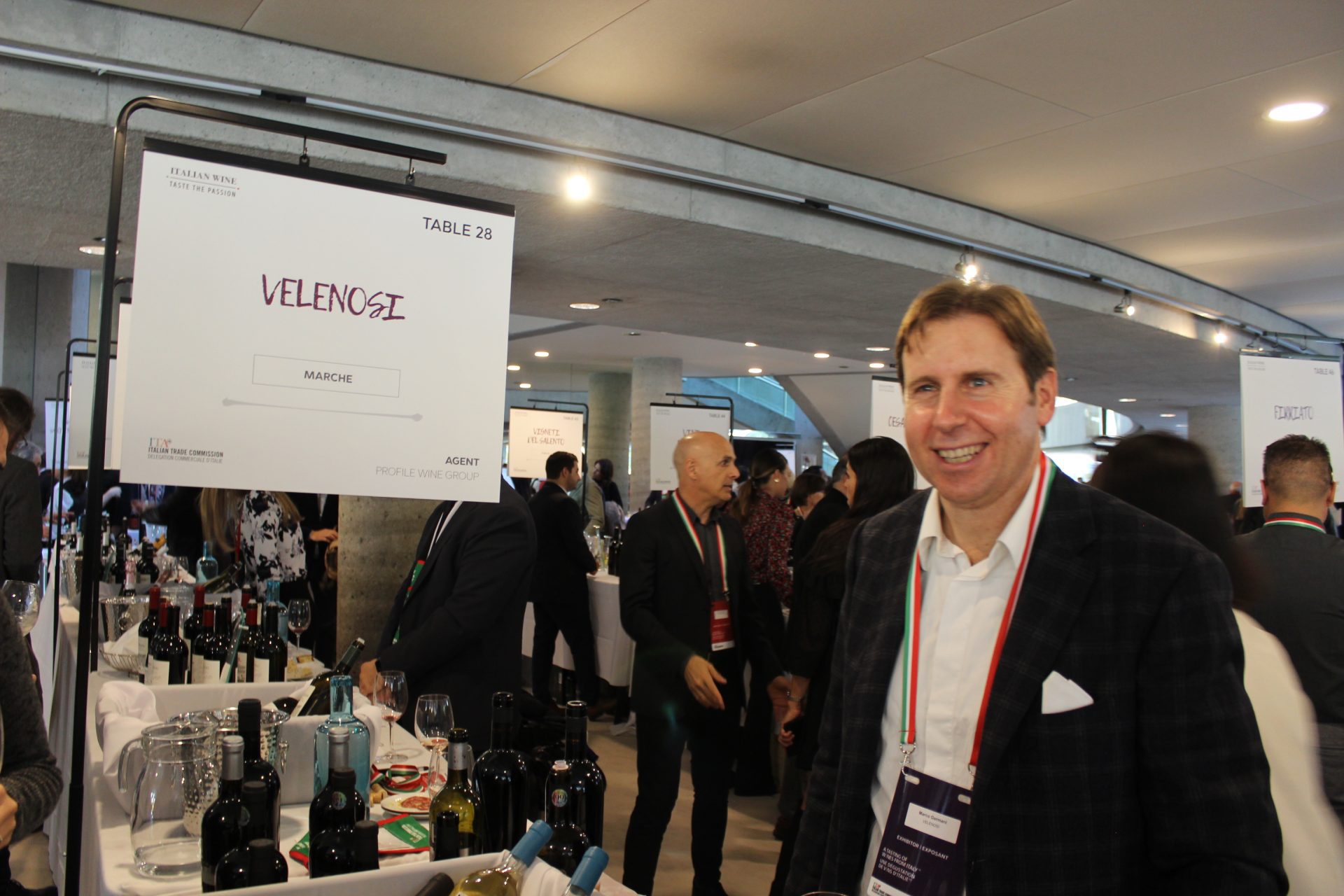
Marco Germani of Velenosi from the Marche.
I was waiting for my colleague Jamie to finish tasting a flight of wines from Barbaresco (more on this below) when I noticed I was standing right beside a man at table whose badge read Marco Germani. He’s the export manager for Velenosi, a producer from the Marche. I was not familiar with Velenosi, and the Marche isn’t an Italian region I know all that much about either. He gestured as if to ask if I wanted to taste any particular one of the wines he was pouring. I said, ‘Si: all of them’ and I’m glad I did. I was particularly taken with Velenosi’s hauntingly pretty 2018 Lacrima di Morro d’Alba Quercianta 2018 with its distinctive bouquet of roses and violets. An excellent discovery.
3) Try something new from someone you know…
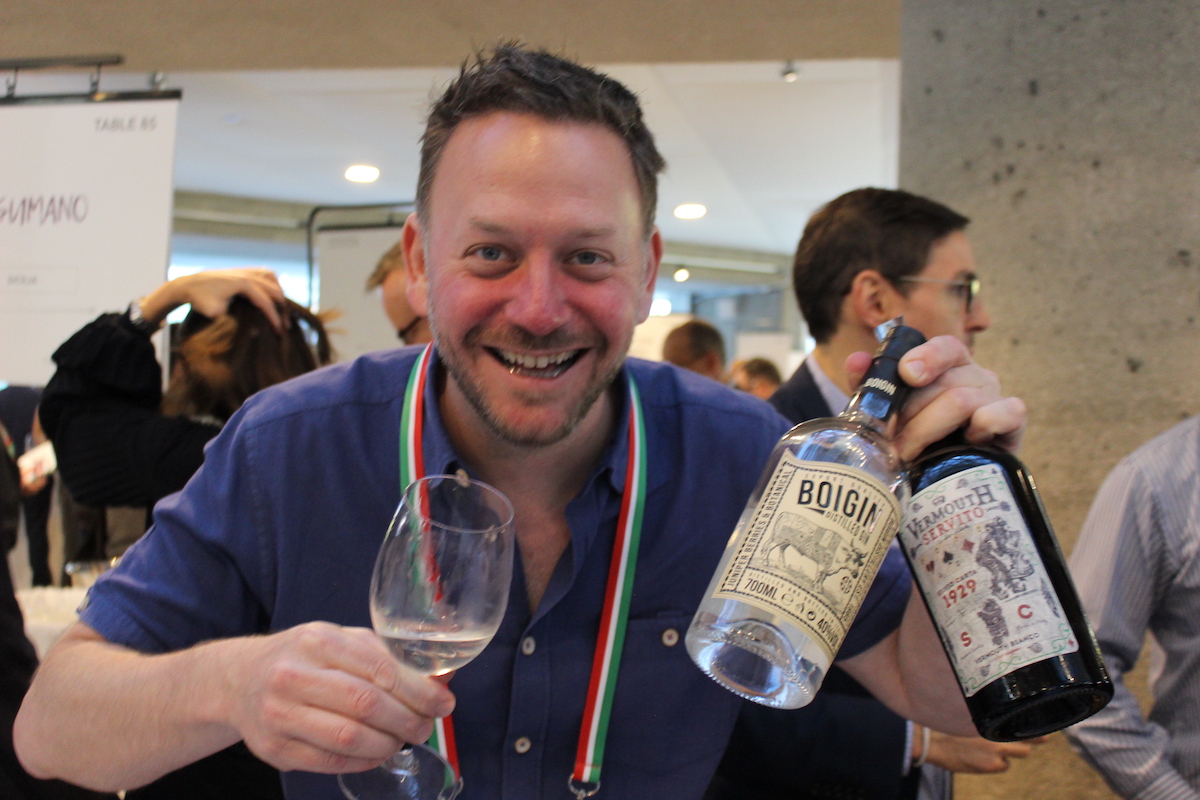
Bernard Stramwasser with the fixins for a Negroni…
Longtime GFR readers will recognize wine agent Bernard Stramwasser of Le Sommelier. Bernard was there with Alberto Mason of the Sardinian winery and distillery Silvio Carta, and offered to make me a Negroni with Vermouth from Silvio Carta. That sounded pretty good and I was tempted, but I was there to taste wine, not sip cocktails and, in any event, Bernard was soon distracted answering other attendee questions. So, instead I asked Alberto to take me through what he’s brought: artisanal Vermouths made from 100% Vernaccia di Oristano and 100% Vermentino, respectively. Amazing products.
4) Look for a crowded booth…
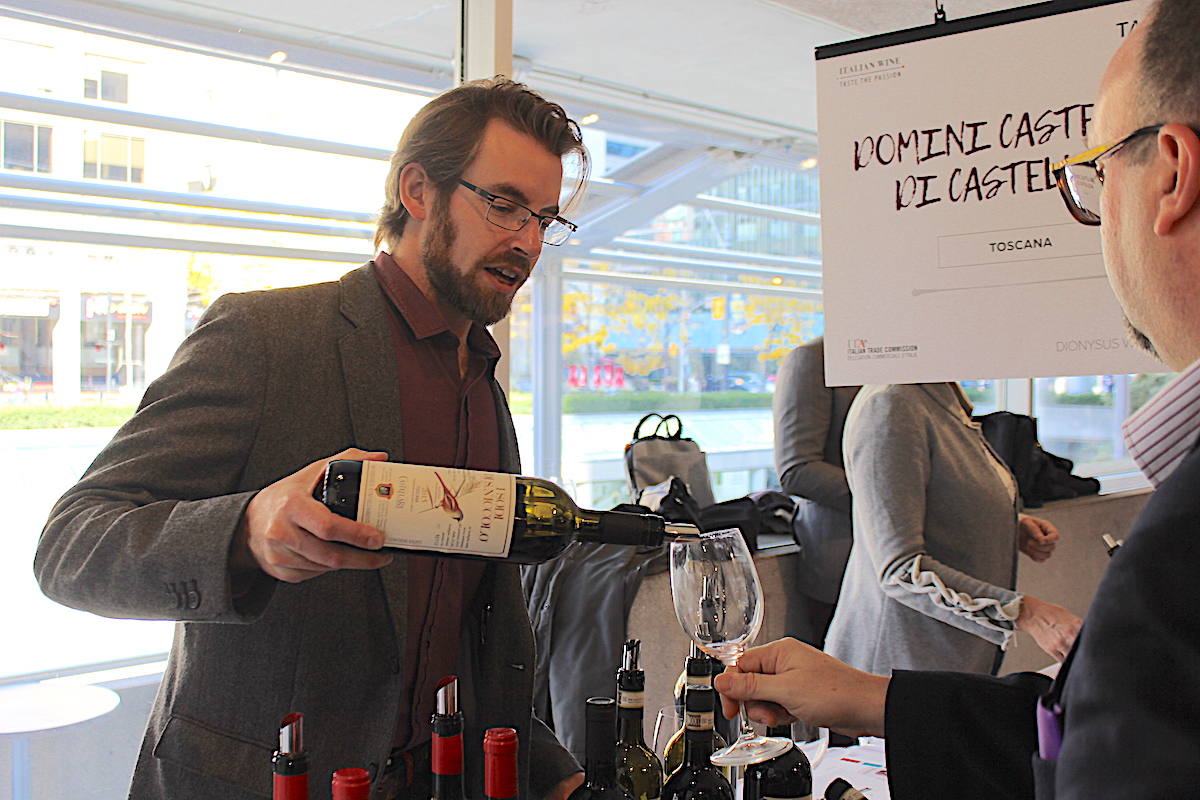
I don’t want to put too much stock in crowded booth, since traffic ebbs and flows anyway, and there are lots of hidden gems to uncover at the Italian Trade Show. But, it’s true that it was a crowd of young sommeliers tasting at a table, manned by John Praskey of Dionysus Wines & Spirits, that caught my attention. When I ventured over it turned out John was pouring reds from Tuscan producer Domini Castellare di Castellina. Castellare’s Chianti’s have distinctive bird themed labels, and while I remembered the wines, I hadn’t tasted them in a long time, so I wated my turn to try the 2017 Classico, 2016 Riserva and the 2015 I Sodi di San Niccolò, which is given only an IGT designation as it’s made with 85% Sangioveto and 14% Malvasia Nera. It was quite an elevating flight and was capped off with a tasting of two wines from the Castellare estate to the west of Chianti in Maremma, also blended with Sangioveto.
5) Ask an expert…
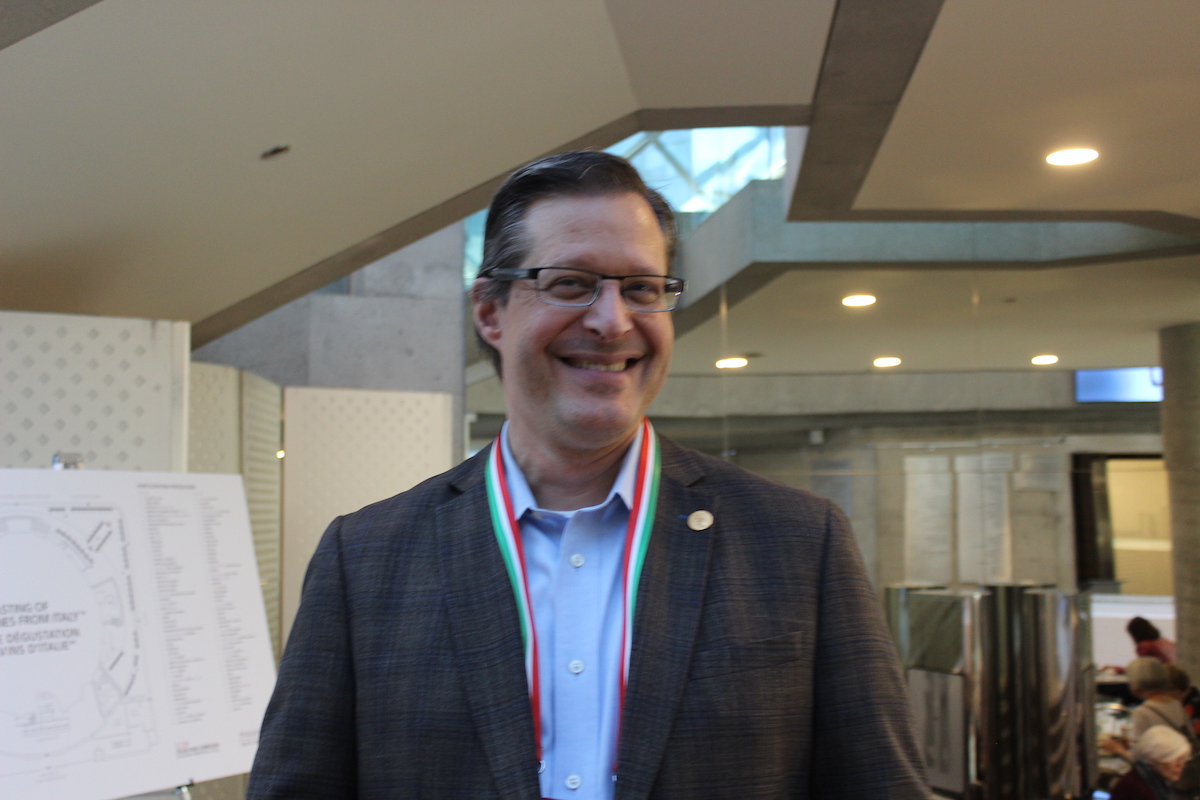
Master of Wine Eugene Mlynczyk from Arterra Wines Canada.
The Italian Trade Tasting attracts pretty knowledgeable people, like Eugene Mlynczyk MW, one of Canada’s handful of Masters of Wine, or…
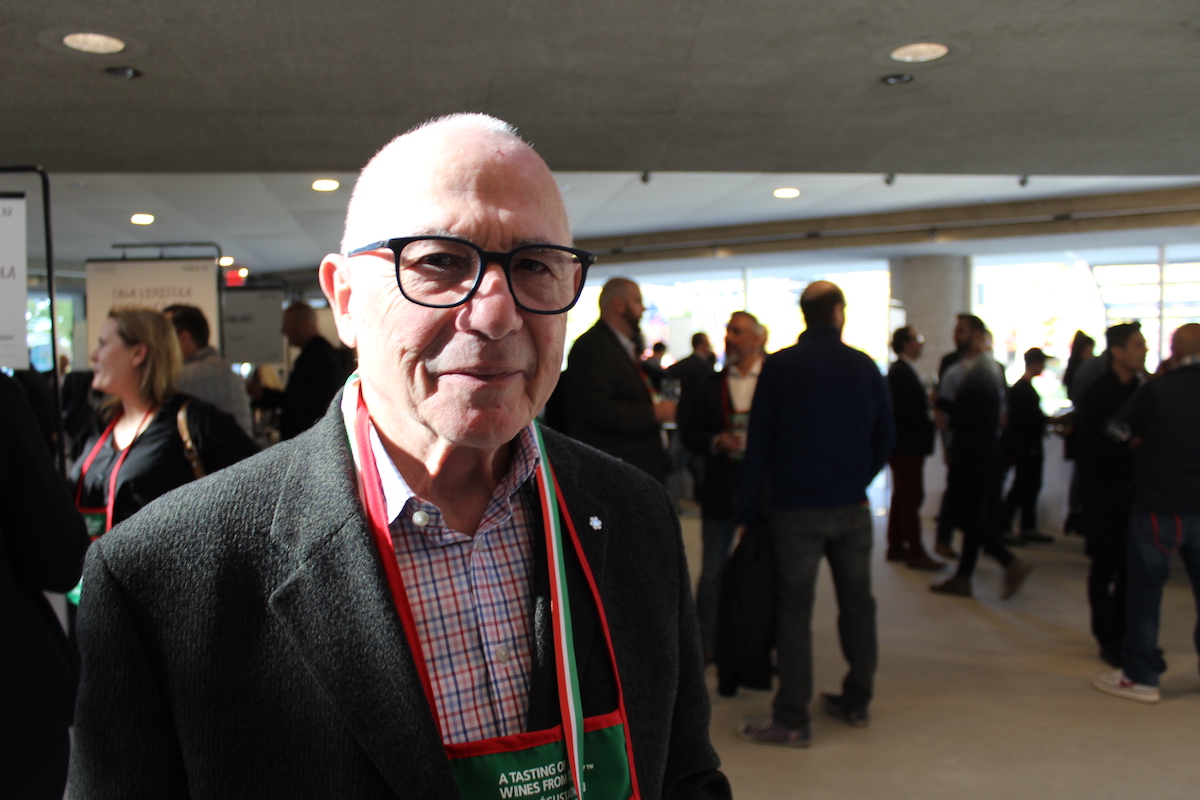
Tony Aspler CM, who earned the Order of Canada for his services to the Canadian wine industry and wine writing, or…

Lynn Abernathy, Sara d’Amato and Kim Gertler.
The CAPS crew, including president Lynn Abernathy, sommelier and wine writer Sara d’Amato and filmaker and wine journliast Kim Gertler, or…
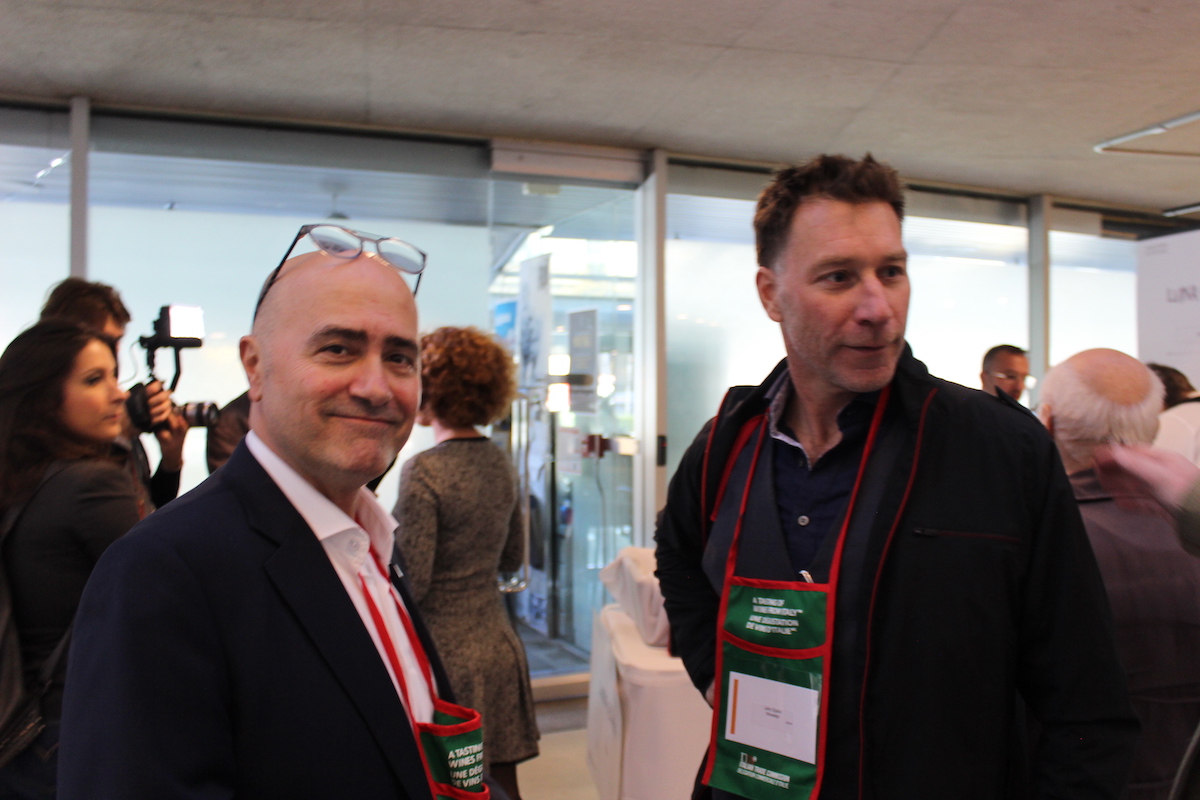
Piero Titone from ITA and Master Sommelier John Szabo.
Master John Szabo (right) talking to the Italian Trade Commission’s Piero Titone.
6) Work up to the ‘Big B’s’…
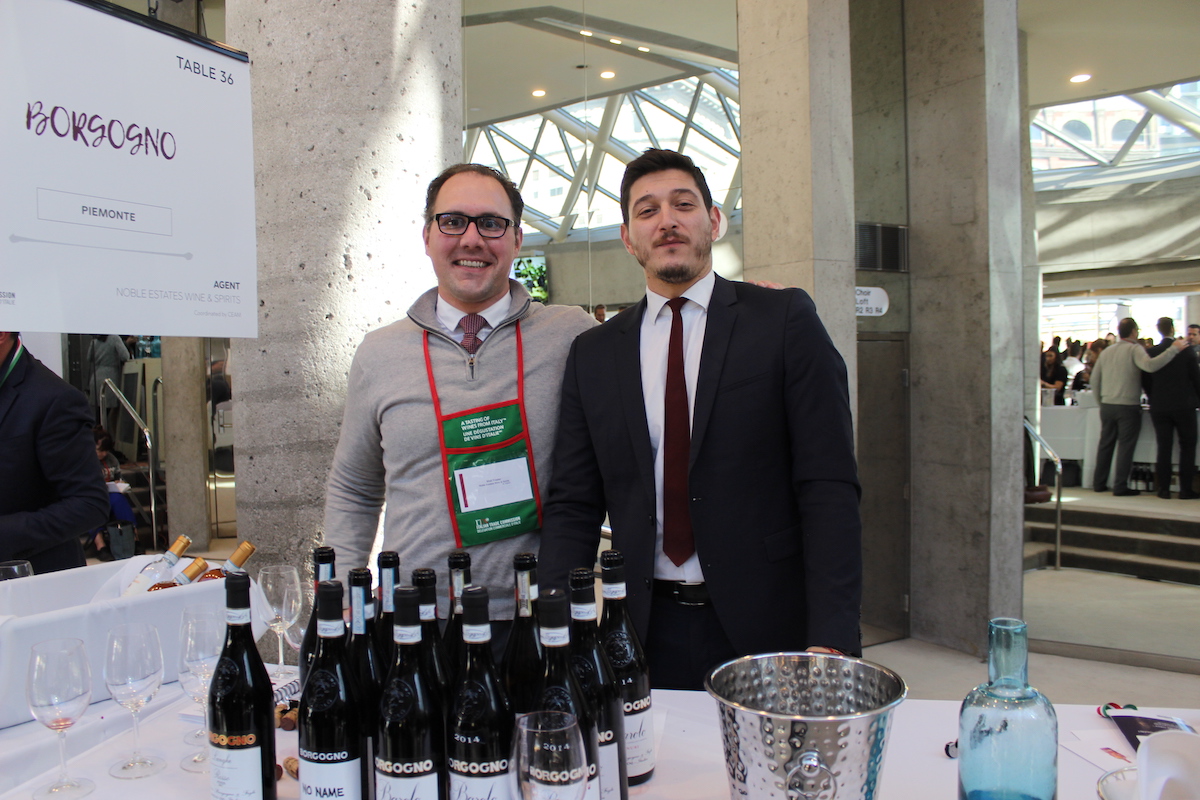
Noble Estates’ Matt Fowler with Andrea Cravero from the Barolo producer Borgogno.
The 2014 Borgogno Cannubi Barolo DOCG is a lovely wine from that cool vintage, with pronounced yet delicate forest fruit. I’d tasted it in the spring and was eager to get back to it so many months later. But before I did, when stepped up to the Borgogno table I made it my business to taste through the ‘lesser’ wines export manager Andrea Cravero had brought with him from Piedmont, including the delicious 2017 Langhe DOC Rosso Pininin, which blends Nebbiolo, Barbera and Dolcetta evenly. I bring this up because as I tasted through, with the wine writer and restaurateur Michael Godel, we noticed several attendees who marched up to the Borgogno table asking only to taste the Barolo, or “the best wine”. We shook our heads and agreed that’s not how it’s done. Later, at the table of the Barbaresco producer Castello di Neive, Jamie and I saw the same phenomenon, and raised our eyebrows in disapproval.
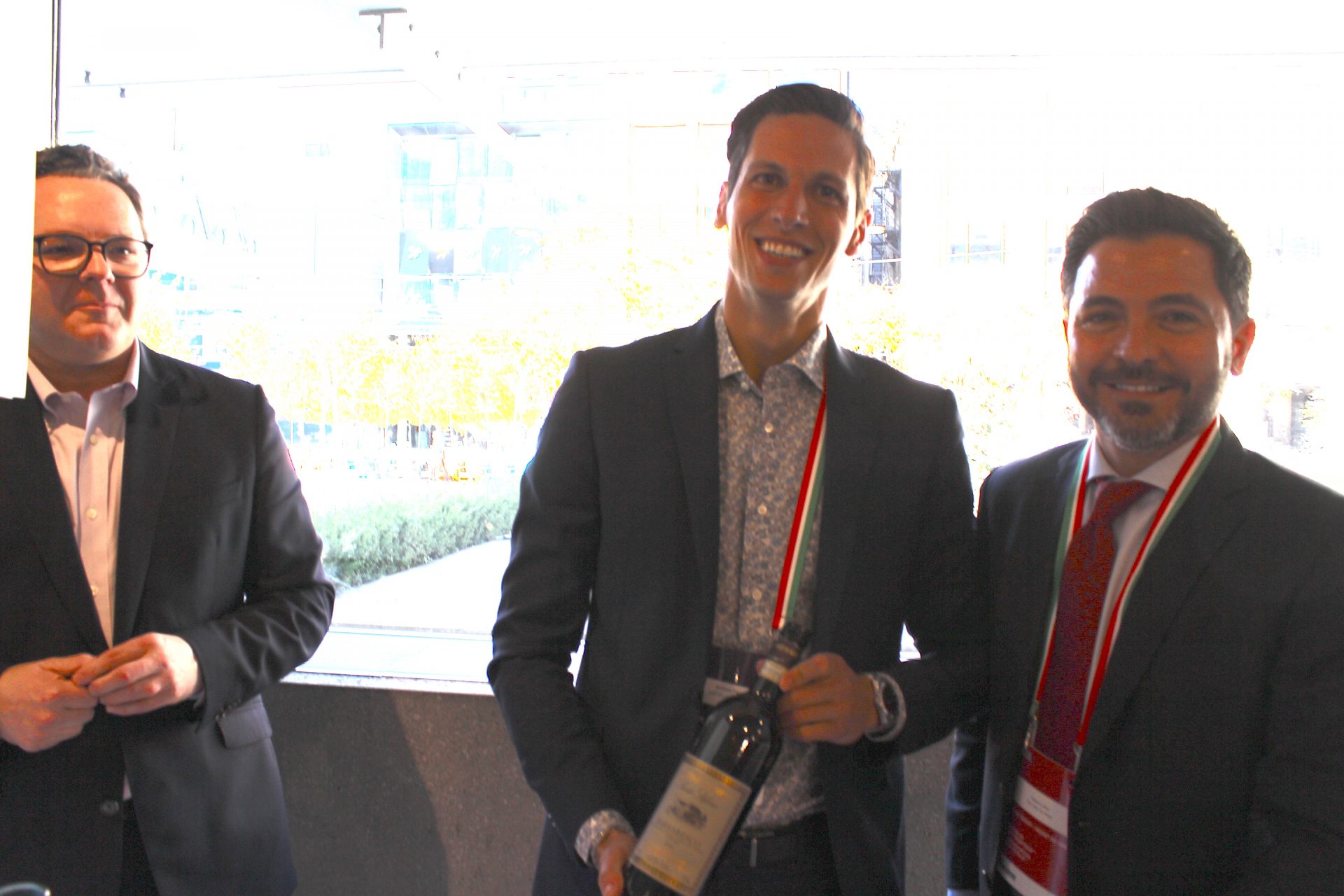
Castello di Neive’s Andrea Pace is flanked by agents Ruben Elmer and Roberto Albis from The Case For Wine.
Yes, as discussed, the only trouble with the Italian Trade Tasting is that there are so many wines and only so much time. And, of course, there are few events where you can find really premium wines at so many tables, not just the Big B’s of Barolo, Barberesco and Brunello, but top labels from all the regions of Italy. The temptation to limit the tasting to just “the best wines” is understandable. But it’s also absurd and terrible mistake because there no such such thing as “the best wine”. Sometimes the best wine for a particular occasion is the 2018 Castello di Neive Langhe Arneis, or the 2017 Dolcetto d’Alba, both of which showed splendidly. It’s not to say they were better than the 2016 Santo Stefano Barbaresco, just they were pleasurable and interesting in their own way. In a similar way, the attendee that demands to only taste the Barolo or Barberesco would have missed Borgogno’s cheeky and luxurious 100% Nebbiolo No Name Langhe DOC 2015, which is really a Barolo declassified out of protest, or Castello di Neive’s 2017 Albarossa, made from an experimental hybrid grape bred of Nebbiolo and Barbera. Finally, I think tasting “up” to the top wines not only gives you a better idea of the producer and their general philosophy, it also helps you understand what’s in your glass when you get there.
7) Don’t forget to have fun..

Profile Wine Group’s Drew Walker and Jamie strike a pose.
It’s okay to enjoy yourself at the Italian Trade Tasting becuase with over a hundred producers and hundreds of wines and other drinks to taste from every region of Italy, and dozens of producers to meet and engage with, it would be very difficult to attend A Tasting of The Wines of Italy without learning something and taking away some better understanding of Italian wine. It’s an annual opportunity to learn new things, broaden your knowledge and refresh your familiarity with the tremendous diversity of Italian wine that is made from the Alps to Africa. In addition to the wines above, I tried to taste wines from as many regions as I could, and there was a fantastic array available. For instance, from Abruzzo, there was the crisp Pecorino from the big consortium and value proucer Codice Citra. From Campania the amazing Falanghina from the innovative co-operative La Guardiense, which both Jamie and I have written about previously. From Emilia Romagna the enigmatic sparkling red Lambrusco from Cantina di Carpi e Sorbara, fruity and yet dry and crisp and ready to pair with just about anything. From Friuli Venezia Giulia the indigenous and elegant Friulano from Azienda Agricola Scarbolo Sergio. From Lombardia the weird and wonderful Stilrose Rosé Riviera Del Garda Classico Chiaretto DOC made from a unique blend of Groppello, Barbera, Marzemino and Sangiovese grapes. I missed the Biferno Riserve 2010, a blend of Montepulciano and Aglianico, from the Molise, I think maybe because it’s made by Bixio Podere, headquartered in the Veneto. At least now I know to look for it next year. From Puglia there was the wines from Luccarelli, including a 100% Mavasia Nera, deep in black fruit. From the Trentino and Alto Adige the aromatic Pinot Bianco from Peter Zimmer. From Umbria, 100% organic Sangrantino in the deep and dark ‘Il Bio’ Umbria IGT from Lungarotti. And from the west end of the Veneto, Valpolicella’s light cousin from the shores of Lake Garda, Bardolino made by Monte del Fra’. It was quite a tour, and a lot of fun.
See you at the Italian Trade Tasting next year.
Good Food Revolution is proud to have supported the 2019 A Tasting of Wines from Italy trade tasting in collaboration with the Italian Trade Commission in Toronto.

